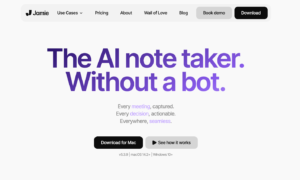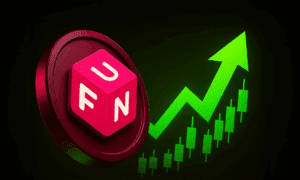On the surface, note-taking sounds simple enough, especially in contexts that do not require much active participation, such as meetings or lectures. This is rarely the practice case, however, as it becomes readily apparent how difficult it can be to balance clarity, quantity, and quality in one’s notes.
A Visual note-taking app like Opal goes a long way in providing writers with the digital tools they need to organize their notes effectively. These tools work best when the user has strong digital note-taking skills to utilize their features and functions fully. As such, it is crucial to know how to take notes that contain essential and relevant information without wasting time and energy capturing every word spoken at a meeting, lecture, or conference.
Starting With the Right Tools
Before putting your proverbial pen to paper, you should know that the note-taking tools you use can dictate the way you take and utilize your notes. For instance, visual workspace tools enable users to easily locate and store their notes, eliminating the need to search through files and directories for a single document.
Not everyone requires that degree of visibility, however, so some people prefer to take notes in basic word processors or other stripped-down, text-centric apps and services. Keep in mind that different tools will be more or less suitable for the jobs they are used for; a coder likely is not taking the same kinds of notes as a doctor, for example, so they would benefit from specific note-taking tools that accommodate the kinds of information they need to record and examine later on.
Don’t Be a Perfectionist
It can be tempting to try to write down every word spoken at a meeting or other event, but this practice is more often counterintuitive than not. In trying to focus on everything equally, you don’t actually get the chance to focus on much of anything, at least when it comes to identifying critical information, i.e., essential ideas, insights, and facts.
Strive for clarity and unity over quantity when taking notes. A suitable method for determining what is or is not essential information is to set clear goals before taking notes. Consider what you or your team needs to achieve from a given event, and then focus on the information relevant to that goal.
Write First, Organize Later
Once you get an idea of what your notes need to focus on, writing those notes down should be easier. Structuring them is another issue, however, and an important one at that. Having a page full of words lacking clear connections to one another could prove more confusing than helpful, but there is a time and place for organization.
Unless you know in advance how your notes will need to look, trying to determine structure while writing those notes is usually more trouble than it is worth. Instead, use basic shorthand, such as bullet points or numbered lists, the first time around, and then integrate a more logical structure later on that shows how those ideas connect.
Be Willing to Experiment
If you don’t already have a preferred method of note-taking or would like to try others, don’t be afraid to do so. A final draft for notes may need to follow a specific style or structure, but first drafts can and should be written in a way that makes sense to you, especially when you go to clarify those notes later.
Although it may not seem like it at first, good note-taking is an art that takes time to learn and master. As with many parts of life, the best approach is to be patient, focus on what matters, and do what works best for you.
FAQ
Q: How do note-taking apps differ from one another?
A: Different apps may specialize in different styles of note-taking. One app may be suitable for outlining, while another offers a visual representation of how information is connected.
Q: How much information should I include in my notes?
A: Only enough to capture the most important details relative to your objective. As such, it is possible to include too much information in your notes.
Q: When is the best time to organize my notes?
A: Typically, after recording them, unless you already have an idea of how they will need to be structured, i.e., for regular business meetings or lectures.

































